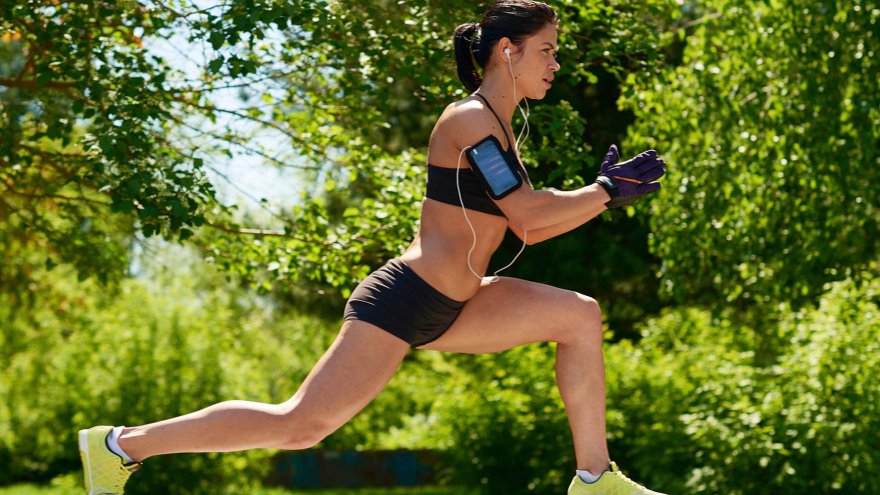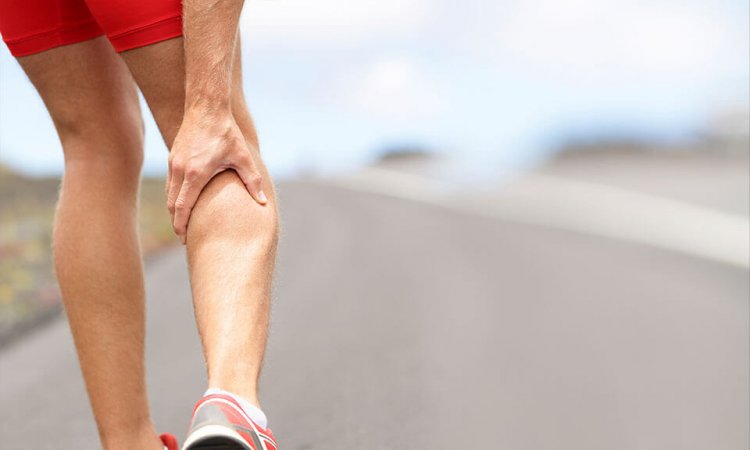Should You Be Running After Leg Day?

Okay, here’s the situation…
Leg day is the one day guaranteed to leave you feeling, well, dead. Tired. Exhausted. Like you may not be able to get out of bed the next day.
Now here’s the million-dollar question… Should you be running after leg day? Why yes or why not?
What Types of Cardio Can I Do After Leg Day?
A tough leg workout can be very taxing. And due to DOMS (delayed onset muscle soreness), we recommend choosing a gentle cardio activity.
Swimming, for example, is a great form of cardio for after leg day. In particular, you may find breaststroke helps you to ease soreness in your lower body.
Gentle cycling is another form of cardio you could consider after leg day. You may be sore, but easy pedaling could actually feel good after lifting hard.
The elliptical motion can also be something easy on your body post-leg workout. Just remember this isn’t the time to try to set records for calories burned or resistance settings.
Is it Better to Run Before Or After Leg Day?
If you’re looking at running on leg day, the typical question is before or after the torturous lift?
For some athletes on a serious and rigorous training program, they plan to have two workouts. If your buddies all meet to run in the morning and your slot with the personal trainer is in the afternoon, it is understandable that you might run before lifting.
Depending on your goals, this is a fine option. However, we encourage you to space your morning run and late afternoon lift session eight to nine hours apart.

If you are looking for an easy cardiovascular workout after your weight lifting session, you may find easy running after leg day works better for you. However, if you are looking for a quality run, the best-case scenario is to space your run six or seven hours after you lift.
Analyze Your Goals
If you are like most runners, you are running for fitness and performance gains. But these are two very different goals.
When striving for fitness gains, using both cardiovascular and strength training activities provides excellent balance. Having said that, you may need to make some concessions.
For example, if you decide to engage in a comprehensive weight lifting regiment, you may find yourself unable to run every day after a quality lift. And guess what? That’s okay!
If your goal is to build muscle and strength, you probably don’t want to run before lifting, especially the lower body. Lifting with a tired body and fatigued muscles is less likely to help build the strength you desire.
However, if you are training for a Boston Qualifier marathon and your coach or training plan has you amping up the miles, you may find that taking off from running when you lift is simply out of the question.
This is why you need to think about your personal goals and develop a regiment that fits into your life. As we say over and over, there are no easy; one size fits all answers.
Is Running Good The Day After Leg Day?
No matter how bad the DOMS hits you, resist the urge to stay curled up in bed the day after leg day. A nice, easy run is probably the best thing you need to combat muscle soreness. If you’re slowing down, remember to really slow down.
Did you know that most runners don’t take the advice to slow down to heart? It may be tough for you to believe, but elites who run marathons at sub 5:00 minute mile paces often run a super slow (to them) 8:00 or 8:30 pace for recovery runs. So if you’re an Average Joe or Jane runner, are you slowing your roll down that much on a recovery day?
If you aren’t, perhaps consider doing so for the best recovery.
Is It Okay To Run With Sore Legs?
It certainly is! Whether your legs are sore from that intense leg workout, speed work at the track, or a killer tempo run, running out the soreness is okay.
The rule of thumb for running through soreness is that it is okay to keep going if running does not increase soreness. In general, when you start moving easily, you begin to work the kinks out. The process of running nice and easy usually has you slowly feeling looser as the minutes and miles click by.

If your goal is truly a simple recovery run and to work the knots out of your sore legs, leave the watch at home (or cover it with some painter’s tape), forget pace, and head out for an easy loop. Don’t overthink it. Don’t fret over pace. Just head out and go.
Consider changing up your tunes to a recovery choice for those who listen to music while you run. For example, if metal music is your jam, find something mellow for a recovery day. It’s been proven that music choices can actually push people to speed up or slow down.
Choose something that will have you feeling mellow and relaxed. Focus on relaxing your body and staying loose. Or better yet, if you have the ability to unwind this way, go without music. Instead, listen to the birds and squirrels or whatever sounds are around you. Just be in the moment.
The Choice Is Yours
Of course, it is always your decision if you should run on leg day. If you choose to run before or after lifting legs but on the same day, be cognizant of the impact that may have on your performance. Always keep your big picture goals in sight when determining what your workouts should look like.
Along the same vein, you will need to determine where to position tough lifting days like leg day in the scheme of your workout week so you can continue to grow as an athlete.
When the rubber meets the road, your goals, aspirations, and “big picture” are all that matter. Happy running, folks!
Latest Articles
 Is Running on a Treadmill Easier Than Running Outside?Runners have their own preferences, whether it is treadmill running, running outside on the road, or exploring trails. So...
Is Running on a Treadmill Easier Than Running Outside?Runners have their own preferences, whether it is treadmill running, running outside on the road, or exploring trails. So... Is It OK to Use Trail Running Shoes on the Road?While trail running shoes can be used on roads, especially in situations where a runner encounters mixed terrains or pref...
Is It OK to Use Trail Running Shoes on the Road?While trail running shoes can be used on roads, especially in situations where a runner encounters mixed terrains or pref... How to Fix Sore Quads After Running?Rest, ice, gentle stretching, and over-the-counter pain relievers can help soothe sore quads after running. Also, ensure ...
How to Fix Sore Quads After Running?Rest, ice, gentle stretching, and over-the-counter pain relievers can help soothe sore quads after running. Also, ensure ... 10 Fruits With The Most Electrolytes to Replace Sports DrinksThese fruits are high in electrolytes such as potassium, magnesium, and calcium, essential for hydration, muscle function...
10 Fruits With The Most Electrolytes to Replace Sports DrinksThese fruits are high in electrolytes such as potassium, magnesium, and calcium, essential for hydration, muscle function...

